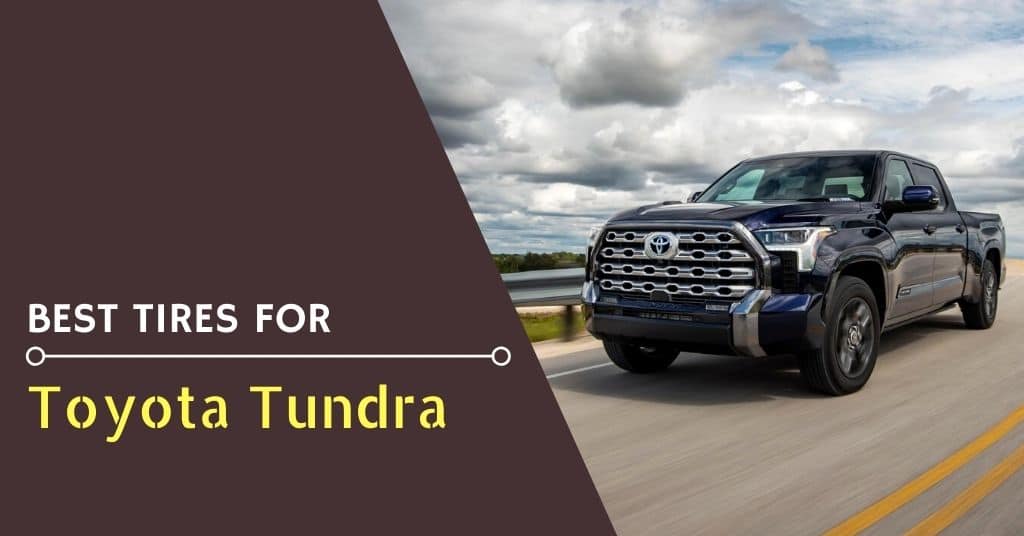Unlock the mystery of buying tires for your Toyota Tundra 2023 with this comprehensive guide. You’ll learn which tire types, sizes and features are best-suited to your vehicle, ensuring a smooth ride year-round. Let’s get started!
Best tires for toyota tundra 2023
- Goodyear 112S toyota tires (Editor’s Pick)
- NITTO toyota tires (Best Overall)
- Accelera Iota ST68 toyota tires (Budget Friendly)
- NITTO 117T XL toyota tires
- General Grabber A/TX toyota tires
- Mastercraft 102H toyota tires
- Falken Rubitrek 112T toyota tires
1) Goodyear 112S toyota tires
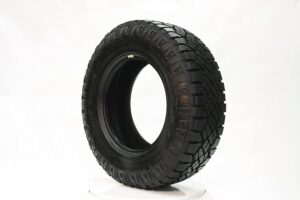
The Goodyear 112S Toyota tires are an all-season radial tire that is specifically designed for Toyota vehicles. With a radial construction and a 17-inch rim, these tires can handle a load of up to 2469 pounds, making them ideal for heavier vehicles like SUVs and trucks. The S rating on these tires indicates that they are rated for speeds up to 112 mph. These all-season tires provide a balanced performance in wet and dry conditions, with superior traction and handling. The optimized tread pattern provides stability on the road and helps to reduce road noise.
The Goodyear 112S Toyota tires also offer excellent durability and a long tread life, making them a reliable choice for drivers who want a tire that can handle all weather conditions. Overall, the Goodyear 112S Toyota tires offer excellent performance, durability, and reliability. With their all-season capability, radial construction, and S rating, they are a great choice for Toyota vehicle owners looking for a high-quality tire that can handle a variety of road conditions.
2) NITTO toyota tires
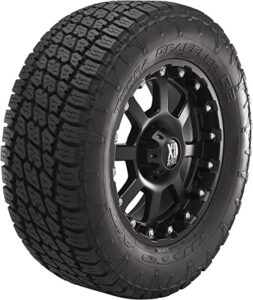
The NITTO Toyota tires are designed to provide a comfortable and safe driving experience, with a variety of features that make them an excellent choice for non-winter driving. With an 18-inch rim size, these tires are suitable for a range of vehicles and offer a sleek, modern look with their black sidewall design. The 65 aspect ratio ensures a smooth ride with good handling and stability, while the T speed rating means they are suitable for speeds of up to 118 mph.
Overall, the NITTO Toyota tires are a solid choice for those looking for a high-quality, non-winter tire option. Their design and construction ensure a safe and comfortable driving experience, while their 18-inch rim size and black sidewall design add a touch of style to any vehicle. With a T speed rating, these tires are also suitable for high-speed driving on the highway.
3) Accelera Iota ST68 toyota tires
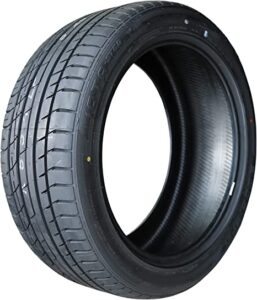
The Accelera Iota ST68 tires are an excellent option for truck and SUV owners looking for a versatile all-season tire. With a V-speed rating, these tires offer excellent handling and stability, even at high speeds. They feature a radial construction and a 20-inch rim size, making them suitable for a wide range of vehicles. The Accelera Iota ST68 tires also provide reliable traction on wet and dry roads, thanks to their advanced tread pattern and silica compound.
This makes them a good choice for drivers who frequently encounter changing weather conditions. Additionally, these tires are designed to provide a smooth and comfortable ride, thanks to their optimized tread block sizes and patterns. Overall, the Accelera Iota ST68 tires are a great choice for drivers who need a reliable and versatile tire that can handle a variety of driving conditions.
4) NITTO 117T XL toyota tires
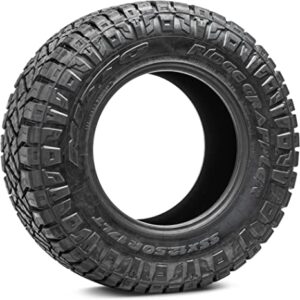
The NITTO 117T XL Toyota tire is a suitable choice for light trucks. It has an all-terrain feature that makes it capable of driving on different surfaces, including gravel, mud, and dirt. The tire has a 55.0 aspect ratio, meaning that its height is 55% of its width. This ratio provides stability and enhances handling. The tire’s 20 inches rim size ensures a perfect fit for Toyota trucks.
Additionally, the NITTO 117T XL Toyota tire has a T-speed rating, indicating that it can maintain a maximum speed of 118 mph. It also features a black sidewall that enhances the tire’s appearance. However, the tire is designed for non-winter use, meaning it may not provide sufficient grip and traction on snowy and icy roads. Thus, drivers living in areas with harsh winter conditions may need to consider alternative tires. Overall, the NITTO 117T XL Toyota tire is a reliable choice for light trucks that require all-terrain capabilities and high-speed ratings on non-winter surfaces.
5) General Grabber A/TX toyota tires
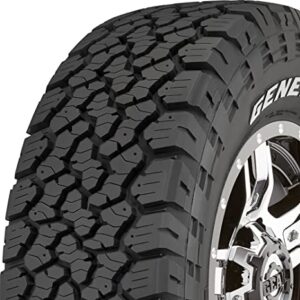
The General Grabber A/TX Toyota tires are designed to provide excellent performance all year round, thanks to their advanced features. These tires are designed to fit 17-inch rims and have a T speed rating, which means they are capable of maintaining a safe and steady performance at speeds of up to 118 mph.
One of the standout features of these tires is their StabiliTread technology, which enhances their stability and helps to maintain a comfortable ride. Additionally, the DuraGen technology adds durability to these tires, ensuring they can withstand wear and tear from regular use. Despite their advanced features, these tires still manage to offer a comfortable driving experience. Overall, the General Grabber A/TX Toyota tires are a great option for those in need of reliable, year-round tires that are both durable and comfortable.
6) Mastercraft 102H toyota tires
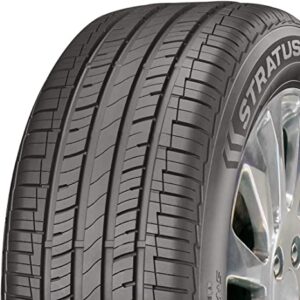
The Mastercraft 102H Toyota tires are an excellent choice for drivers looking for reliable and versatile tires. These tires are designed for all-season use, making them suitable for a variety of weather conditions. They come in a 17-inch rim size and have an H speed rating, ensuring a smooth and stable ride at high speeds. The treadwear protection of the Mastercraft 102H tires provides increased durability, making them a long-lasting investment.
The nylon overwrap further enhances their durability and strength, allowing for greater resistance against punctures and tears. The shoulder slots on these tires provide excellent grip and handling, making them ideal for both wet and dry road conditions. The slots work to channel water away from the tires, reducing the risk of hydroplaning and increasing safety for the driver. Overall, the Mastercraft 102H Toyota tires are a solid choice for drivers seeking a dependable and long-lasting tire option. With their all-season design, durability features, and enhanced handling capabilities, these tires provide a well-rounded performance on the road.
7) Falken Rubitrek 112T toyota tires
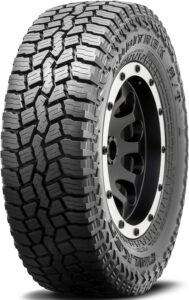
The Falken Rubitrek 112T Toyota tire is an all-terrain radial tire designed for use with a 16-inch rim and an 8-inch rim width. With a 70.0 aspect ratio and a T speed rating, this tire is well-suited for a range of applications and driving conditions. Made in Thailand, the Falken Rubitrek 112T Toyota tire features a durable and rugged tread design that provides excellent traction on both wet and dry surfaces. The tire’s construction also includes reinforced sidewalls for added strength and durability, making it ideal for off-road driving.
In addition to its performance capabilities, the Falken Rubitrek 112T Toyota tire is designed with aesthetics in mind. Its aggressive tread pattern gives it a bold and stylish appearance that will enhance the look of any vehicle. Overall, the Falken Rubitrek 112T Toyota tire is a high-quality, versatile tire that provides excellent performance both on and off the road. Its all-terrain capabilities, reinforced sidewalls, and stylish design make it a great choice for any driver in need of a reliable and rugged tire.
Best tires for toyota tundra 2023-Complete Buying Guide
Welcome to our comprehensive guide to finding the best tires for the Toyota Tundra 2023. When it comes to choosing tires for your vehicle, it is important that you take into account many factors such as traction, road noise, and of course budget. This guide will help you understand the variables behind tire selection so you can choose a tire that meets all your needs and allows you to enjoy your ride in maximum comfort and safety.
We will explore various types of tires available for the Toyota Tundra 2023, such as all-season, off-road/mud-terrain, performance/award winning, eco-friendly tires, and more. We will also look at factors that affect tire performance or safety such as treadwear rating and speed rating. We will also tackle topics such as how to check your current tire’s wear and tear level or when it’s time to replace them. So without further ado, let’s dive right into our Toyota Tundra 2023 Tire Guide! Thanks for joining us!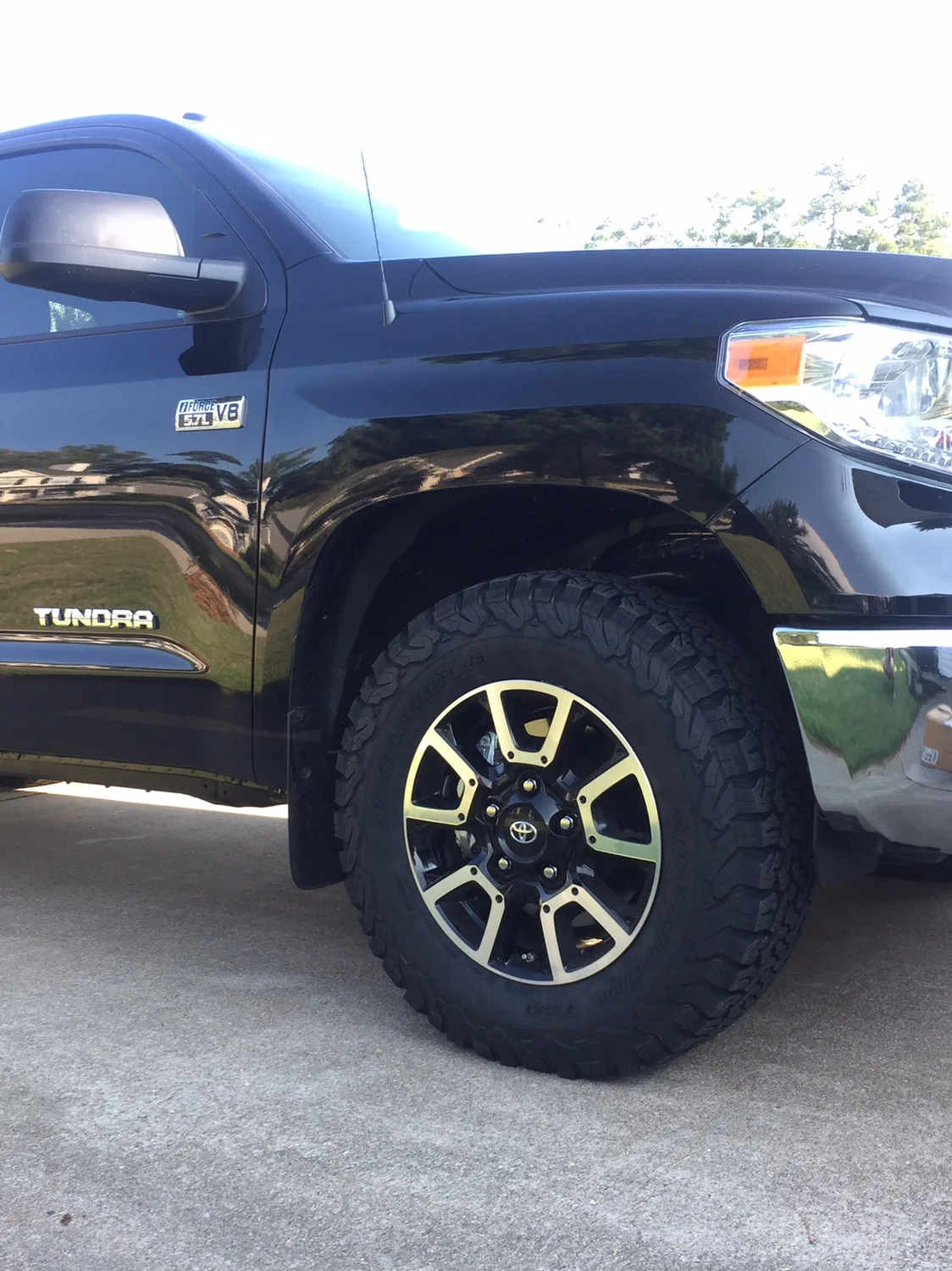
Photo Source: tundratalk.net
Explanation of the importance of choosing the right tires for a Toyota Tundra 2023
Having the right tires for a Toyota Tundra 2023 is essential for its performance. The tires are one of the main components of your vehicle, providing traction in various road and weather conditions as well as a comfortable ride. Choosing the correct tires can have a huge impact on the Tundra 2023’s lifespan and efficiency.
The size and type of tire will be different depending on how the vehicle is used, whether it is used off-road or exclusively on asphalt roads, or if it will be used mainly in wet or snow-covered terrain. Different grades of tires can affect how the vehicle handles while hauling heavy loads, as well as overall fuel economy.
It is particularly important to choose specific tires that are designed to fit your make and model of car in order to get the most out of your vehicle. The size and type should be determined based on how you intend to use your Toyota Tundra 2023. It would be wise to consider winter performance features such as anti-lock brakes, traction control systems and all wheel drive (AWD). Additionally, look into more specialized features that may enhance ride quality such as increased traction for wet surfaces or improved impact resistance for improved safety ratings. Finally, investigate warranties offered with different tire brands before making a purchase decision. The right tire choice can ensure safety and improve overall performance for years to come.
Brief overview of the factors that should be considered while selecting the best tires
Whether you are buying new or used tires for Toyota Tundra 2023, there is a number of factors to consider when selecting the best tires for your vehicle. These include tire size, seasonality, and use, as well as price and brand. It’s important to be aware of the different tire types that are available, including all-season and off-road tires.
Tire size: Tires come in a variety of sizes to fit various vehicles – cars with larger engines may require larger tires, while smaller vehicles might need smaller tires. Consider what size will be best suited for your vehicle and keep in mind that you can always upgrade to an oversized tire if needed.
Seasonality and Use: When selecting the right tire for you car, think about how and where you will drive most often – summer only? All terrain? Snow? Take into account what type of driving conditions will be present in your region so that you choose the right fit.
Price Vs Quality: You can opt for cheap tires but remember that expensive doesn’t always mean good quality. Compare price with features such as tread life warranty, fuel efficiency ratings, off-road capabilities or other features. Also compare brands to make sure you buy from a trusted name in quality rubber products.
Types of Tires for Toyota Tundra 2023
When it comes to selecting tires for your Toyota Tundra, there are several options to choose from. Depending on the type of driving you do and what kind of terrain you’ll be travelling through, each type of tire has its own set of advantages:
All-Season Tires (Performance): These tires offer optimal treadwear and traction year-round. They feature deep tread grooves for better grip in wet weather, as well as more robust sidewalls for increased durability.
All-Terrain Tires (Off-Road): All-terrain tires provide excellent grip in a variety of terrain types, including mud, dirt and gravel. Their unique tread pattern allows them to dig deep into the surface below in order to maximize traction and control.
Winter/Snow Tires (Extreme Cold Weather): Winter/snow tires are specifically designed for extreme cold weather conditions. They feature deep tread grooves that help evacuate slushy snow from the contact patch area, and their special rubber compound design helps grip even icy surfaces with ease.
Mud Terrain Tires(Mud & Rocks): Mud terrain tires are designed for traversing muddy surfaces on off-road trails with ease. Their rugged sidewall design helps prevent punctures, while their stepped lugs are specially designed to support heavier loads without hindering your traction in slippery conditions.
Run Flat Tires (Flat Tire Driving): Run flat tire technology is a great option when dealing with a flat tire emergency situation because they offer extra protection against deflations while also providing extra stability and control when driving at lower speeds.
Explanation of different types of tires (all-season, winter, summer, all-terrain, mud-terrain) available for Toyota Tundra 2023
When buying tires for your Toyota Tundra 2023, you need to consider different types of tire options. Each tire type offers different benefits and is best suited for specific driving conditions. Here’s a quick guide to help you choose the right tire technology:
All-Season: All-season tires are designed to provide good all-round performance in wet and dry conditions during warm, summer months as well as cold winter months. They are a balanced tread compound that provides good grip on pavement as well as traction in light snow, targeting drivers who want an all-around driving experience but don’t require extreme performance.
Summer: Summer tires are designed with a stiffer rubber compound to give excellent grip on wet surfaces and in warmer temperatures. The tread pattern helps with the wet cornering performance and reduces noise for a more comfortable ride. These tires may be suitable for light drivers who want superior control and handling at higher speed limits or who use their vehicle mainly during nice days from late spring through fall.
Winter: Winter tires feature special tread patterns and rubber compounds engineered to improve snow and ice traction when roads become slippery during colder seasons. For optimal winter performance, it is suggested that winter tires are stored away when summer arrives so they can be swapped out for regular all season tires once again when temperatures drop again in the fall.
All Terrain (AT): All terrain (AT) tires feature aggressive tread design with multiple sipes and tie bars that improve handling in dirt, gravel, or other off-road environments while still providing adequate road grip on highways or urban streets ranging from mild to moderate offroading scenarios. AT tires typically feature 3PMSF (3 Peak Mountain Snow Flake) rating which indicates their ability to drive through snow up to certain depths efficiently without damaging the surface of the ground underneath it too significantly. This makes them very useful for both recreational activities such as going over rocky paths, mud puddles or sand dunes when camping and also provides improved street handling capabilities due its aggressive design platform combined with heavy duty sidewalls offering better protection against impacts compared to regular all season tires making them preferable solutions when traversing rough terrain frequently either while commuting or while engaged in off road recreational activities.
Mud Terrain (MT): Mud terrain (MT) tires features changes aggressive tread patterns sculpted into a deep void pattern along with chunky wide lugs affixed onto ultra heavy duty sidewalls which like AT tire incorporate 3PMSF rating indicating its capacity to be driven through snow albeit less safely then AT because of its even more aggressive approach rises exponentially making them great solutions for tackling extreme offroad trails including areas such as mud bogs where going slow speeds over slippery soft surfaces needing maximum available traction is necessary ensuring high stability on inclines/declines due increased flotation capacity of large lugs with high void ratio reducing risk of slippage usually associated with such scenarios.. These designs prioritize weight versus wheel speed allowing extra traction between wheel lug & surface below making them viable solutions for vehicle utilizing intense outdoor activities like rock crawlings or conquering mountainsides over rocky terrains requiring increased wheel horsepower submission & stringent torque application offering greater control & less risk even moving slowly giving driver peace of mind from significant increase offered resistance thanks enhanced load bearing capabilities MT offers compared AT alternatives.
Comparison of the pros and cons of each type of tire
When deciding between the various types of tires available, it is important to consider the pros and cons of each type of tire. All tires provide traction and stability, but the performance characteristics will vary based on the type of tire you choose. This guide will compare the pros and cons of all-season, all-terrain, mud-terrain and winter tires for a Toyota Tundra 2023.
All-Season Tires: All-season tires offer good traction in wet or dry conditions and are often a good choice for drivers who don’t need extreme performance capabilities. The main benefit of all-season tires is their long tread life. They are designed to wear evenly over time, which helps reduce costs associated with premature tread loss. The downside is that they may not perform as well in extreme conditions such as deep snow or icy roads.
All-Terrain Tires: All-terrain tires offer enhanced traction compared to all season tires, making them ideal for people who drive off-road or need to frequently cross unpaved trails. In addition to improved traction in wet or dry conditions, all terrain tires offer increased resistance to punctures from rocks or debris on rough surfaces. One potential downside is that their stiffer construction can lead to a rougher ride on smooth road surfaces than an all season tire would provide.
Mud Terrain Tires: Mud terrain tires offer superior traction compared to other types of tire due to their large tread blocks, open lug holes and increased siping depth. That being said, they are not designed for daily highway driving because they wear more quickly due to their aggressive design characteristics which can lead to an uncomfortable ride at high speeds on smooth roadways and the decreased fuel efficiency due to their wide footprint design.
Winter Tires: Winter tires are designed specifically for cold temperatures and provide much better grip in icy conditions than any other type of tire would be able to offer. This makes them essential for people who live in climates where winter conditions occur routinely but bear in mind that they won’t perform as well when temperatures start consistently climbing above 45 degrees Fahrenheit as this reduces their effectiveness significantly so it’s important factor your regional climate into consideration when making your decision here.
III. Factors to Consider While Buying Tires for Toyota Tundra 2023
When choosing tires for the Toyota Tundra 2023, there are several factors to consider in order to find the best match for your vehicle. You will want to know how different types of tires handle various terrains, how much treadwear remains before you have to replace them and what amount of protection is offered by certain tire models. Additionally, consider factors such as price and warranty coverage.
Tire Performance: Performance involves several elements, including dry braking, wet braking, snow and ice traction, cornering stability and hydroplaning resistance. Evaluate your current driving habits to determine which performance features are most important for you. In most cases your priority should be safety over performance, as a better grip on the road is never a bad thing.
Treadwear Ratings: Treadwear indicates how the tread wears down with time and driving miles (km). To determine this rating look at the Uniform Tire Quality Grade (UTQG). This grading system is used by tire manufacturers in order to compare their tires with those of other manufacturers. The higher number means that the tire offers more durable resistance against tread wear – however bigger numbers doesn’t mean best quality or performance necessarily so consider other factors while choosing a particular tire model.
Protection: Protection refers mainly to built-in features such as puncture resistance or reinforced sidewalls that prevent damage from abrupt impacts on uneven surfaces and impedes road hazards like sharp stones or pieces of metal from entering through the sidewall. A good protection can help extend life of your tires significantly apart from adding more safety on both off-road activities and everyday use paving roads.
Price: Price is an important factor when buying any material item but remember that there are also different quality levels that come into play when it comes to purchasing automobile tires – cheaper generally means poorer quality so don’t forget that it may end up costing you far more in repair bills or replacements if you go with something lower grade than what was originally needed for optimal operation of your vehicle. Decision whether investing a bit extra now is worth it depends solely on user but here we present only facts about pricing so make sure you don’t decide based purely on monetary value – prioritise safety over money!
Warranty: Tire warranties often cover replacements if a defect causes premature failure within first few years from purchase date (mileage not being covered necessarily), providing additional peace of mind when making decisions about which tires are best suited for your needs. Most reputable brands offer some kind of warranty so make sure you get one when making purchase decision – even if time limited its still better than nothing!
Size and specifications of tires
The size and specifications of the tires you buy for your Toyota Tundra should be carefully considered as this will have a major impact on the performance of your vehicle. When deciding what size tire you need, it is important to consider factors such as your Toyota Tundra’s weight, the amount of cargo you often carry and the kinds of road conditions you most frequently encounter.
Here are some other factors to keep in mind:
-Wheel size: Most Toyota Tundras come with either 16″ or 17″ wheels. With larger tires, there is less potential for tire noise, improved braking and cornering stability as well as improved fuel efficiency.
-Width: The wider the tire, the more firmly it will remain planted on roads but also affects steering sensitivity as well as handling dynamics. In general, wider tires create more product but can sometimes decrease fuel economy due to added rolling resistance.
-Aspect ratio: This number represents the height of the sidewall divided by its width and typically ranges from 45 to 55. Taller aspect ratios provide greater cushioning from bumps and potholes but may cause increased wind drag at higher speeds reducing fuel economy.
-Construction Type: There are two basic types of tire construction-radial and bias ply/cross ply. The radial construction offers better cornering stability due to its belt pattern while bias ply/cross ply tires tend to be cheaper and will last longer under heavier loads or tough road conditions such as offroad terrain.
-Tread pattern: The tread pattern affects traction with different types available for wet or dry surfaces or winter weather driving conditions. Choose a tread pattern that is suitable for your specific driving needs while also keeping in mind their environmental impacts (some patterns produce more noise than others).
Load carrying capacity
When selecting tires for your Toyota Tundra, it is important to consider the weight of what you plan to carry. Over- or under-inflated tires can affect your vehicle’s performance, as well as its safety. The load carrying capacity of the tires for your Toyota Tundra will depend on the size and type of tires selected. Generally speaking, P-metric and LT-metric light truck tires have higher load carrying capacities than their European metric counterparts, allowing them to support more weight.
For most P-metric light truck radials and LT-metric light truck radial tires with high load indexes (such as 110 or more), a maximum inflation pressure of 44 psi should be used at any given operating temperature. Cars with adjustable suspensions may have heavier loads than standard cars, so check with a qualified tire specialist if you have such a car to determine its specific requirements. When selecting your tire size or type, consult the vehicle owners manual or tire placard attached to the doorjamb to ensure that they meet all applicable legal regulations in terms of speed rating, load index, section width, aspect ratio and rim diameter.
Traction and handling in different road conditions
When choosing tires for your Toyota Tundra, things like traction and handling in different road conditions should be taken into consideration. While summer tires may provide less friction in dry or wet paved roads or light gravel, they loose their grip in cold weather when road surfaces become icy or snowy. On the other hand, all-season tires are designed to provide good traction in wet, dry and winter conditions as well as light mud.
In terms of water handling, aggressive treads can do a better job evacuating water to prevent hydroplaning than smaller patterns with finer grooves. Different tire manufacturers use different tread designs to enhance their characteristics on specific road surfaces so it is important to choose the right one for your needs.
Another factor you must consider is ride comfort and quietness. The higher the rubber compound quality and the rubber density per linear inch of tire sidewall, the more shock absorbent they will be while reducing road noise levels making them safer and more comfortable to drive on.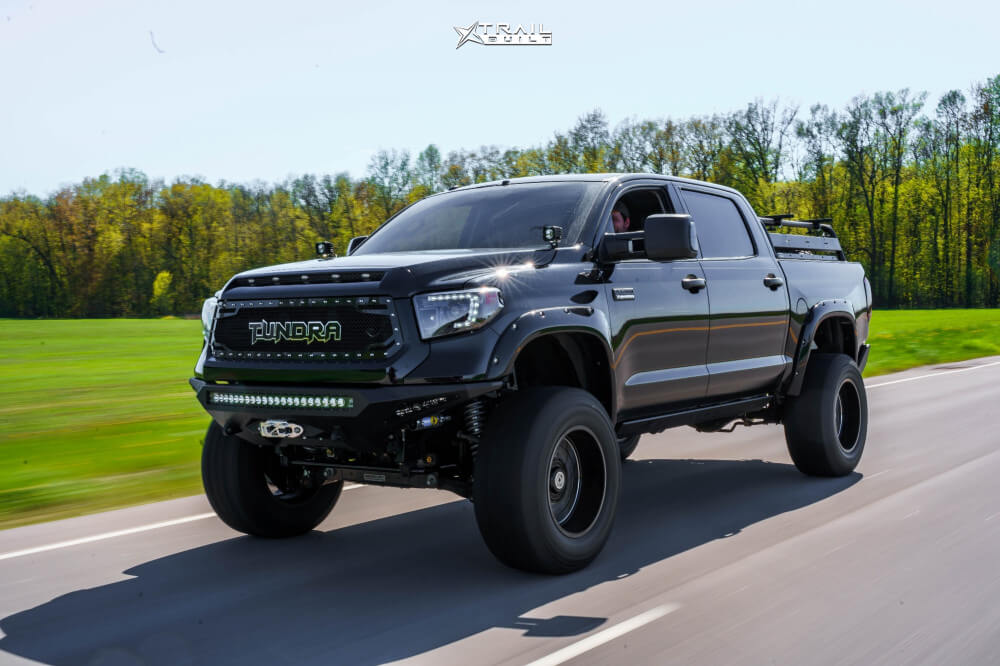
Photo Source: trailbuiltoffroad.com
Conclusion
When shopping for tires for your Toyota Tundra, you need to consider factors such as driving conditions, budget, and desired performance. The tires you purchase will determine the safety and comfort of your drive. Ultimately, deciding on the best tires depends on several factors specific to your individual situation.
It’s important to take into account all aspects of tire selection and make an informed decision. Be sure to compare different brands and models before making a purchase. Consider speak with an expert either online or at a local store to get the best advice possible for choosing the right set of tires for your Toyota Tundra.
FAQ’s
What brand tires come on Toyota Tundra?
The brand of tires that come on a Toyota Tundra can vary depending on the model and trim level. Some common tire brands for Toyota Tundras include Bridgestone, Michelin, Goodyear, and Yokohama.
How long do tundra tires last?
The lifespan of Tundra tires will depend on a variety of factors such as driving habits, road conditions, and tire maintenance. Generally, Tundra tires can last anywhere from 30,000 to 60,000 miles, but it’s important to regularly check tire pressure and tread wear to ensure they are in good condition.
What size tires can I put on my Toyota Tundra?
The size of tires that can be put on a Toyota Tundra will depend on the model and year of the truck. Common tire sizes for Tundras include 245/70R17, 275/65R18, and 285/55R20.
What is the best wheel size for Tundra?
The best wheel size for a Tundra will depend on personal preference and the intended use of the truck. Many Tundra owners prefer 18 or 20-inch wheels for their truck’s balance of style and performance.
How much do Toyota Tundra tires cost?
The cost of Toyota Tundra tires can vary depending on the brand, size, and quality of the tires. On average, Tundra tires can range from $100 to $300 per tire.
What is the highest mileage Tundra?
The highest mileage Tundra on record is a 2007 Toyota Tundra that has reportedly traveled over 1 million miles with its original engine and transmission.
What TYRE brand does Toyota use?
Toyota uses a variety of tire brands for its vehicles, including Bridgestone, Dunlop, Goodyear, Michelin, and Yokohama.
Which year Tundra is best?
The best year for a Tundra will depend on personal preference and the intended use of the truck. Generally, newer Tundras will have more advanced features and better technology, but older models may be more affordable and have a more rugged design.
What tire company does Toyota use?
Toyota uses a variety of tire companies to supply its vehicles with tires, including Bridgestone, Michelin, Goodyear, and Yokohama.
How often should you rotate tires on Toyota Tundra?
It’s recommended to rotate your Tundra’s tires every 5,000 to 7,500 miles to ensure even wear and prolong the lifespan of the tires. However, it’s always best to consult your owner’s manual or a trusted mechanic for the specific recommendations for your Tundra model.

